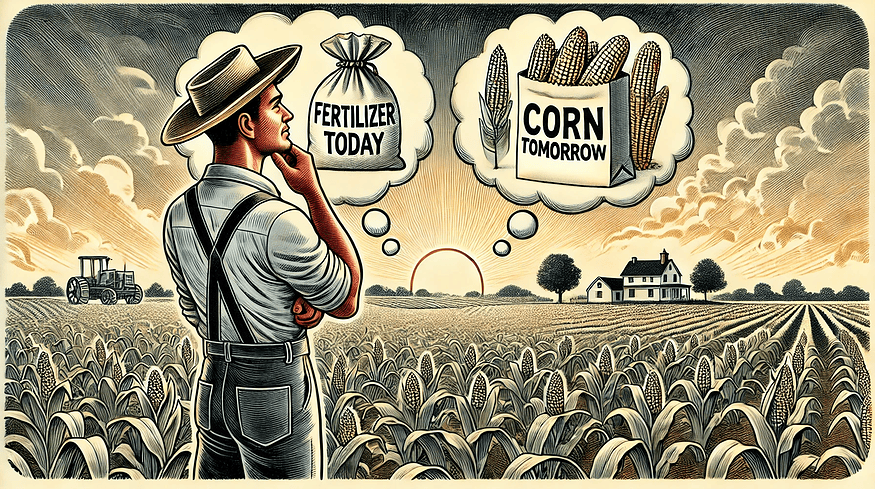Friday’s Insider: Fertilizer prices and agricultural commodity costs, a comparative analysis

Fertilizer prices play a significant role in determining the final price of agricultural commodities. As a crucial component of growing costs, fertilizers impact farmers’ profit margins and influence market prices of crops like corn and wheat. Given that fertilizer costs are incurred “today” while the selling of harvested crops happens “tomorrow,” understanding these dynamics is essential for evaluating affordability and economic viability.
Comparing prices from the previous year to the current year provides insights into the trends and economic pressures faced by farmers. Here are the key figures:
Corn:
- On 27/06/2023: $5.56 per bushel
- On 27/06/2024: $4.33 per bushel
Wheat:
- On 27/06/2023: $7.16 per bushel
- On 27/06/2024: $5.98 per bushel
Fertilizer prices (FOB NOLA, as to me it’s the most traded basis in the world):
Urea:
- On 27/6/2023: $295 per short tonne
- On 27/6/2024: $300 per short tonne
DAP:
- On 27/6/2023: $451 per short tonne
- On 27/6/2024: $543 per short tonne
To determine fertilizer affordability, we can calculate the ratio of crop prices to fertilizer costs. This index provides a measure of how much crop revenue is available per unit cost of fertilizer.
For Urea:
Corn
- 2023: approx 0.0188
- 2024: approx 0.0144
Wheat
- 2023: approx 0.0243
- 2024: approx 0.0199
For DAP:
Corn
- 2023: approx 0.0123
- 2024: approx 0.0080
Wheat
- 2023: approx 0.0159
- 2024: approx 0.0110
Comparing the affordability indices, it is clear that the ability to cover fertilizer costs from crop revenue has decreased from 2023 to 2024. This implies that fertilizers have become less affordable over the past year.
Specifically:
- The affordability index for urea has decreased by approximately 23.4% for corn and 18.1% for wheat.
- The affordability index for DAP has decreased significantly by approximately 35.0% for corn and 30.8% for wheat.
This decrease in the affordability index indicates that less crop revenue is now available to cover fertilizer costs compared to the previous year, which could strain farmers’ profit margins and overall financial health.
Of course, now both wheat and corn are almost at the bottom of their recent downtrend movements, and a good farmer needs to follow the affordability ratios to understand when they have “to lock” prices of the future crops and when to buy fertilizers for their next application campaign. As well as a good trader, who has to understand the limits of where prices may go either way. It’s part of the game!
————
About the Author of “Friday’s Insider”: Ilya Motorygin is the co-founder of GG-Trading and brings 30 years of experience to the fertilizer industry. Renowned for his comprehensive problem-solving skills, Ilya expertly manages deals from inception to completion, overseeing aspects such as financing, supply chains, and logistics.
Enjoyed this story?
Every Monday, our subscribers get their hands on a digest of the most trending agriculture news. You can join them too!















Discussion0 comments